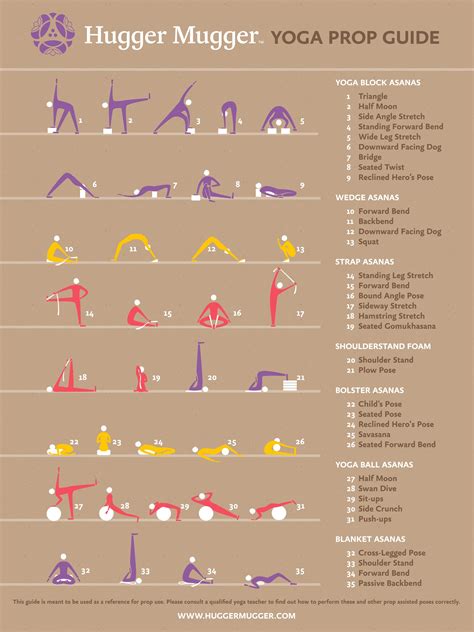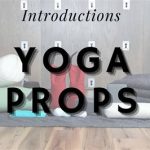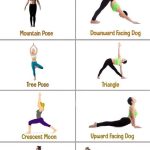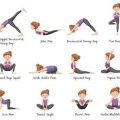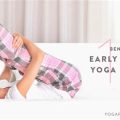Essential Yoga Props for Beginners: 15 Must-Have Tools to Enhance Your Practice
Yoga is a journey of self-discovery and physical well-being, but when you’re starting out, the variety of poses and techniques can seem overwhelming. That’s why having the right tools or yoga props can make your introduction to the practice more accessible, safe, and enjoyable. From improving alignment to adding support, these props are designed to help beginners ease into the practice while maximizing benefits. In this guide, we break down the top 15 yoga props that every beginner should have in their toolkit.
1. Yoga Mat: The Foundation of Your Practice
A yoga mat is perhaps the most important prop for any practitioner. It provides a non-slip surface, cushioning, and space to practice. Look for a mat that is durable, provides adequate grip, and is comfortable under your knees and joints.
- Thickness: Thicker mats (around 6mm) offer more cushioning for sensitive joints, while thinner mats (3-4mm) give better stability for balancing poses.
- Material: Consider eco-friendly materials like natural rubber or jute for sustainability.
2. Yoga Blocks: Support for Alignment and Flexibility
Yoga blocks are essential for helping beginners achieve poses that require flexibility they may not yet have. These props provide stability and height, making it easier to maintain proper alignment without straining.
- Use blocks in standing poses like Triangle Pose to bring the floor closer.
- Blocks can also offer support in seated forward folds to prevent over-stretching.
- Materials: Foam, cork, and wood—foam is the lightest and softest, while cork and wood offer more stability.
3. Yoga Strap: Aiding Flexibility and Range of Motion
A yoga strap is an invaluable tool for beginners who may struggle with flexibility. By extending your reach, the strap helps you deepen stretches and hold poses longer without compromising form.
- Use straps in poses like Seated Forward Bend or Reclined Hand-to-Big-Toe Pose to avoid straining your back or hamstrings.
- Straps come in different lengths; a standard 6-foot strap is versatile enough for most practitioners.
4. Yoga Blanket: Cushioning and Versatility
A yoga blanket can be used in multiple ways to add comfort to your practice. It can cushion sensitive areas, provide warmth during relaxation poses, or add support for seated poses like Lotus Pose.
- Folded blankets can serve as a cushion for knees in poses like Camel Pose.
- Use them for warmth and grounding during Savasana or restorative poses.
5. Yoga Bolster: Deepening Relaxation and Support
Yoga bolsters are primarily used in restorative yoga to offer support during long-held, relaxing poses. They’re especially helpful for beginners who need extra comfort to fully relax into a pose.
- Place a bolster under your back in Reclining Bound Angle Pose for chest opening without strain.
- Use it for seated forward folds to maintain proper spinal alignment while relaxing into the stretch.
6. Meditation Cushion: Enhancing Comfort During Seated Practices
A meditation cushion can make seated meditation practices more comfortable by promoting proper spinal alignment. It elevates the hips and makes it easier to sit cross-legged for longer periods without discomfort.
- Look for cushions filled with buckwheat or cotton for customizable firmness.
- Choose one with a removable cover for easy washing.
7. Yoga Wheel: Building Core Strength and Improving Flexibility
The yoga wheel is a relatively new prop, but it has quickly gained popularity for its ability to deepen backbends and open the chest and shoulders. Beginners can use the wheel for support in challenging poses.
- Roll onto the wheel in poses like Wheel Pose or Bridge to enhance backbending capabilities.
- Use the wheel to improve flexibility in poses that require deeper stretching of the back or hamstrings.
8. Yoga Towel: Absorbent and Slip-Resistant
A yoga towel is particularly useful in hot yoga classes or for those who tend to sweat during practice. It absorbs moisture and provides an extra layer of grip, preventing slips and falls.
- Look for towels made with absorbent microfiber material that enhances grip as it gets damp.
- Use a towel on top of your mat to keep it dry and clean, extending the life of your mat.
9. Resistance Bands: Enhancing Strength and Stability
Although not traditionally associated with yoga, resistance bands can be a great addition for building strength, especially in poses like Chair Pose or Warrior II.
- Use bands to increase tension and improve muscle engagement in balance poses.
- Bands can also aid in stretching and improving flexibility.
10. Knee Pads: Extra Cushioning for Joint Protection
Knee pads can be a lifesaver for beginners with sensitive knees. They provide additional cushioning for poses like Cat-Cow, where pressure on the knees is unavoidable.
- Opt for ergonomic, gel-based knee pads that contour to your knees for maximum comfort.
11. Eye Pillow: Relaxation Aid for Meditation and Savasana
An eye pillow filled with lavender or other calming herbs is a great tool to help you relax during Savasana or meditation. The light pressure of the pillow blocks out light and stimulates the vagus nerve, enhancing relaxation.
- Choose a pillow with a washable cover and natural fillings for an eco-friendly option.
12. Yoga Chair: Supporting Deep Stretches and Inversions
A yoga chair can be a fantastic tool for beginners to ease into inversions or deep stretches. It offers stability and allows practitioners to perform poses like Shoulder Stand with added support.
- Use the chair to stabilize your body in challenging poses like Seated Forward Fold or Hero Pose.
13. Sandbags: Adding Resistance and Grounding
Sandbags are an often-overlooked but powerful prop for grounding and enhancing poses. They can add resistance or pressure to deepen stretches and assist in achieving greater relaxation.
- Place a sandbag on your thighs during Seated Forward Fold to intensify the stretch.
- Use them in Savasana for grounding and promoting a deeper sense of relaxation.
14. Foam Rollers: Muscle Recovery and Tension Release
Foam rollers are excellent for self-massage and muscle recovery. After a yoga session, using a foam roller can release tension in the fascia, muscles, and connective tissue.
- Incorporate foam rolling before or after practice to increase circulation and reduce soreness.
15. Yoga Socks: Grip Without a Mat
Yoga socks are perfect for beginners who want to practice without a mat. They provide added grip and prevent slipping during standing poses, especially when practicing on hard or slippery floors.
- Look for socks with individual toe slots and silicone grips on the soles for maximum stability.
Case Studies: Real-Life Applications of Yoga Props
Many yoga practitioners have used props to advance their practice or overcome physical limitations. Below are three examples:
| Case Study | Props Used | Outcome |
|---|---|---|
| Beginner with tight hamstrings | Yoga blocks, strap | Improved flexibility in Forward Fold and Downward Dog within 6 weeks |
| Senior practicing restorative yoga | Yoga bolster, blanket | Decreased joint pain and improved relaxation through supported poses |
| Hot yoga enthusiast | Yoga towel, mat | Enhanced grip and balance in sweaty conditions |
Stakeholder Analysis: Who Benefits from Using Yoga Props?
Various groups can benefit from incorporating props into their practice:
- Beginners: Gain confidence and improve alignment.
- Seniors: Enhance safety and reduce strain on joints.
- Experienced practitioners: Deepen their practice with advanced props like the yoga wheel.
- Yoga teachers: Offer props to make classes accessible to students with diverse needs.
Implementation Guidelines: How to Integrate Props into Your Practice
Here are some practical tips for using props effectively:
- Start slow: Introduce one or two props at a time to avoid overwhelm.
- Seek guidance: Work with a yoga teacher to understand how to use props for specific poses.
- Be consistent: Regularly using props will improve your form and flexibility over time.
Ethical Considerations: Sourcing Sustainable Props
As more practitioners become conscious of their environmental impact, it’s important to choose sustainable yoga props. Look for eco-friendly materials such as natural rubber, organic cotton, or cork. Additionally, support companies that prioritize ethical manufacturing practices.
Limitations and Future Research
While yoga props can make practice more accessible, they also have limitations. Over-reliance on props can prevent practitioners from developing the strength and flexibility needed to perform poses independently. Future research could focus on finding a balance between prop use and natural progression in practice.
Expert Commentary
As the yoga industry continues to grow, the importance of props in fostering inclusivity and accessibility cannot be overstated. By integrating the right tools, beginners and advanced practitioners alike can benefit from a more supportive, effective, and enriching yoga experience.
